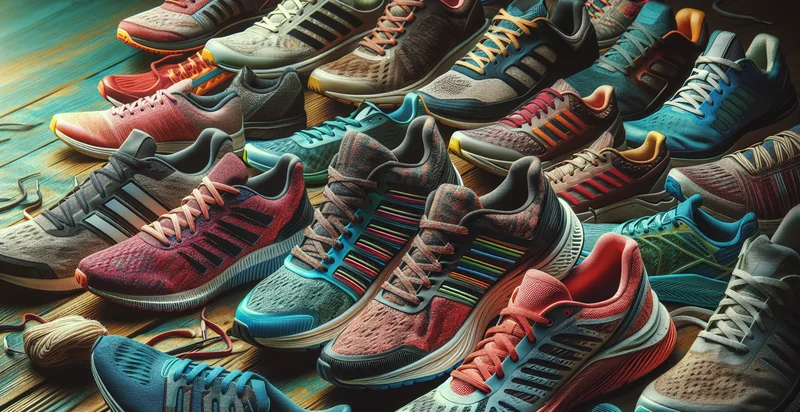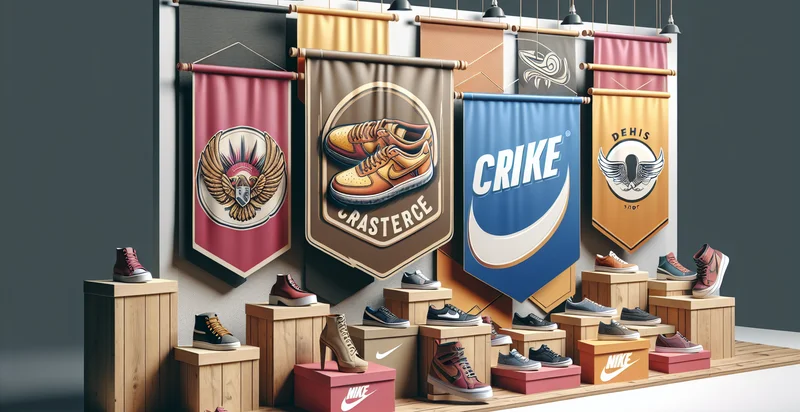Identify shoe brands
using AI
Below is a free classifier to identify shoe brands. Just upload your image, and our AI will predict what shoe brand it is - in just seconds.

Contact us for API access
Or, use Nyckel to build highly-accurate custom classifiers in just minutes. No PhD required.
Get started
import nyckel
credentials = nyckel.Credentials("YOUR_CLIENT_ID", "YOUR_CLIENT_SECRET")
nyckel.invoke("shoe-brands", "your_image_url", credentials)
fetch('https://www.nyckel.com/v1/functions/shoe-brands/invoke', {
method: 'POST',
headers: {
'Authorization': 'Bearer ' + 'YOUR_BEARER_TOKEN',
'Content-Type': 'application/json',
},
body: JSON.stringify(
{"data": "your_image_url"}
)
})
.then(response => response.json())
.then(data => console.log(data));
curl -X POST \
-H "Content-Type: application/json" \
-H "Authorization: Bearer YOUR_BEARER_TOKEN" \
-d '{"data": "your_image_url"}' \
https://www.nyckel.com/v1/functions/shoe-brands/invoke
How this classifier works
To start, upload your image. Our AI tool will then predict what shoe brand it is.
This pretrained image model uses a Nyckel-created dataset and has 44 labels, including Adidas, Alexander Mcqueen, Asics, Balenciaga, Bata, Birkenstock, Brooks, Chanel, Christian Louboutin and Clarks.
We'll also show a confidence score (the higher the number, the more confident the AI model is around what shoe brand it is).
Whether you're just curious or building shoe brands detection into your application, we hope our classifier proves helpful.
Recommended Classifiers
Need to identify shoe brands at scale?
Get API or Zapier access to this classifier for free. It's perfect for:
- Brand Authentication: This function can be implemented by e-commerce platforms to verify the authenticity of shoe brands being sold. By analyzing product images, the system can flag potential counterfeit products and provide customers with assurance regarding their purchases.
- Market Trend Analysis: Retailers can leverage the shoe brand identifier to analyze market trends based on the popularity of different brands. By processing images from various sales channels, they can gain insights into consumer preferences and adjust their inventory accordingly.
- Personalized Marketing: Marketing teams can use this function to tailor their advertising strategies based on the shoe brands consumers are most interested in. By tracking user interactions with images, they can create targeted campaigns that resonate with specific customer segments.
- Visual Search Engine: Shoe brands can integrate this functionality into their mobile apps, allowing users to upload images of shoes they like. The system can identify the brand and provide users with options to purchase similar styles directly from the app.
- Retail Loss Prevention: Retail stores can use the shoe brand identifier for surveillance purposes to monitor for theft. By recognizing shoe brands typically worn by shoplifters, security teams can take preventative measures before theft occurs.
- Social Media Monitoring: Brands can employ this tool to monitor social media for images tagged with their brand. This can help them understand brand visibility and engagement, as well as identify influencer partnerships or customer feedback based on visual content.
- Inventory Management: Warehouse management systems can utilize the shoe brand identifier to streamline inventory processes. By automating the recognition of shoe brands in stock, businesses can enhance inventory accuracy and minimize human error during product sorting and stocking.


